When a resident of a far-flung hamlet opts to journey towards more civilized quarters, he cannot help but notice the status of the land as he travels it. As I and my woman forged south — over the river and through the woods, to grandmother's house indeed — I found myself marvelling at the total absence of Upstate New York's normally-infamous lake effect snow. From Massena to Utica, the entire state is snowless. Not a single snowmobile trail is open. Our county roads are, by late December, almost always harrowing little trails laced with ice over packed snow — taking any motorist who should pass along them through massive wind-blown drifts of snow which remind him of his own smallness. Instead, the drive from Massena to points south was a dreary scoot through corridors of leafless trees on which no jolly, soft curtains of white hung. Pastures were sodden with runoff from ceaseless misty rains, and what little snow there was had turned to funereal billows of "ice fog". The entire scene along the Tug Hill Plateau recalled the misty battle of Alsace-Lorraine more than the jocular warmth and smiling gaeity of Christmas in winter wonderland — this has had a confusing influence on almost everyone I've seen this holiday season.
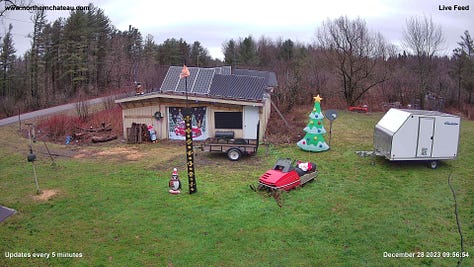
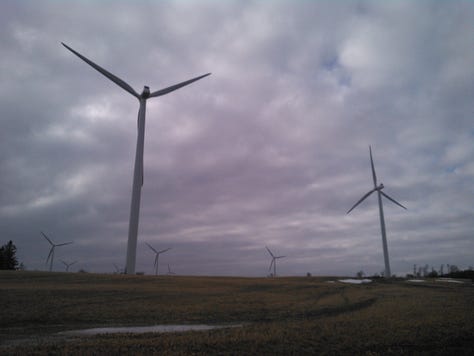
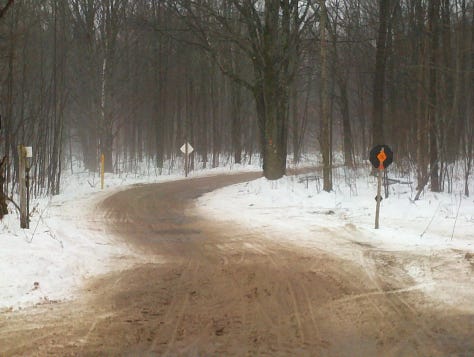
"In my life, I've watched the snowfalls basically cut in half," said my uncle glumly as I entered the house, shaking the rain off my jacket. On the ginger-bread houses, white frosting covered the eaves. I looked back over my shoulder at the eerie December rain, half-wondering what the hell was going on. Here, a lack of snow is not necessarily a blessing — it presents a crisis of identity to a people for whom heavy snowfall is central to their way of life.
The Tug Hill Plateau region of Upstate New York has one solitary claim to fame — we get a lot of snow. Montague, NY holds the world record for the greatest snowfall in a 24-hour period, and a hamlet within the same town also holds the state record for the most snow in a single season with a walloping 466.9 inches in the winter of 1976. That's thirty-eight feet of snow. And the surrounding areas get similarly eye-popping snowfalls. The incredible depth of Lake Ontario to the west of us stores the summer's heat rather well, and, combined with southeasterly winds off the Canadian Shield, makes for truly inconceivable snowfalls. As the lake is warmed by the summer sun by late autumn, her surface shimmers with humidity rising high into the atmosphere, and the cold Canadian winds cool this humidity and carry it west, where it morphs into trillions of big, fat snowflakes.
This climatic system is incredibly delicate. Any Tug Hill local can tell you that a mere two-hundred feet in elevation change can be the deciding factor in whether you receive six inches of snowfall or sixteen. Neighbors who live only a half-mile apart might call one another to compare snowfalls, and often enough, the reports are almost comical. A man might call his cousin to say that he's gotten two feet of snow — and he might laugh in reply, saying that "down here in the valley, we only got three inches, and the sun's out, too!" And every morning on Lowville's hometown radio station 101.3FM The Moose, the 6AM snowfall report runs all season, with old codgers from Harrisville to Altmar calling in dutifully to report any new fluff that has fallen from the clouds into their yard. "“Up on Jackson Hill, Bill Whitmer reported five inches…. at Barnes Corners, Jim Smith reported eighteen…” and so on, with thousands of listeners anxiously comparing statistics.
The Tug Hill obsession with snowfall is derived partially from the thrill of living in such a difficult and unlikely place: The simple act of surviving in a moonscape of snow drifts and blizzards makes a man feel strong. Constant storms cause his blood to rise; the bracing snowfalls exhilarate him even as he sits by his livingroom woodstove. Indeed, living through a rough Tug Hill winter makes one feel at least a little bit "badass". But the obsession is also partly economic, especially for towns in the more isolated regions of the "inner Tug Hill," which is also known as the "lesser wilderness". Here, intense snowfalls stunt the growth of trees, and a forty-mile stretch of land yields virtually nothing in the way of agriculture. In some areas, even logging is marginal. This vast semi-wasteland boasts only mind-numbingly vast populations of deer and endless months of deep snows. Even the Native Americans of the region did not venture into this region during the wintertime — it is well-established in the lore of the Haudeosaunee that only a dimwit would winter there. And in modern days, even the Amish can't hack it on the Tug Hill. A few Amish families bought some land up there about a decade ago — but from what I’ve heard, they've all left for milder regions of the state.
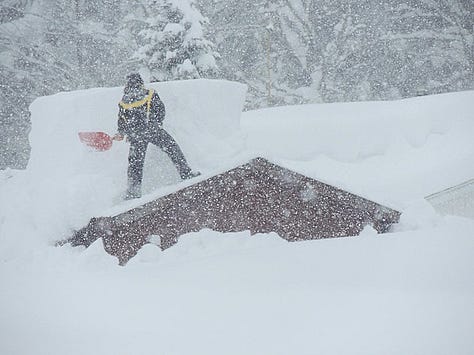
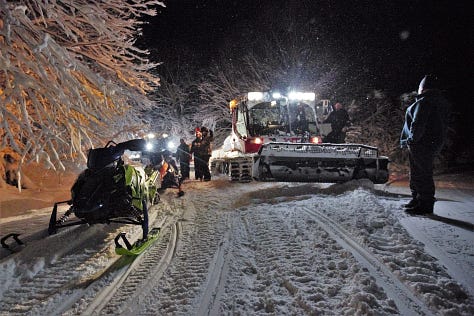
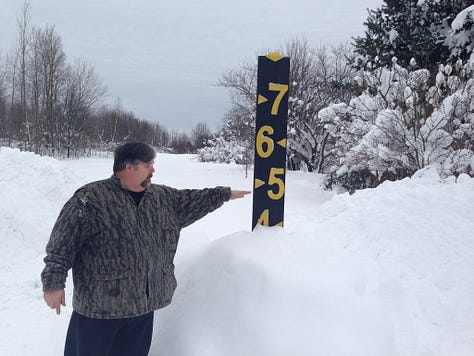
The few who seem to be able to "make it" in the Tug Hill's inner wilderness region are very often almost totally reliant on income from snowmobile tourism. With almost 400 miles of official, groomed snowmobile trails and millions of people within a day's driving distance, numerous bars, taverns, snowmobile mechanic shops, and inns exist solely to serve the snowmobiling public. The harsher the winter, the better they fare. In previous years, the majority of trails have been open as early as Thanksgiving and have remained rideable well into April. When this extensive season was a climatic constant, thousands of dedicated snowmobilers would reserve hotel rooms months in advance. Many places were fully booked for years on end, and the bars and taverns could hardly get enough help to keep up with the unending stream of orders for burgers and drafts. Groomer operators worked round the clock to maintain the trails meticulously. This winter wonderland provided a sufficient income for a handful of hearty folks in the Tug's innermost region, allowing them to reside there year-round.
Last season, I stopped by "The Screamen Eagle" tavern in Inlet (I’ve never known if the mis-spelling of “Screamin’” was deliberate or not). Inlet is not in the Tug Hill, but nearby in the southern Adirondacks. As I rolled into the parking lot, I noticed it was empty in spite of it being a Saturday. The snowmobile trails were muddy and devoid of life, and the only people at the bar were the workers, ostensibly idle the whole day through. But it wasn't for lack of ambition — it was for lack of customers. I was their first of the day, at nearly 1pm. The barkeep seemed somber: "A few more seasons like this and I don't know what we're going to do. Mild winters are killing us."

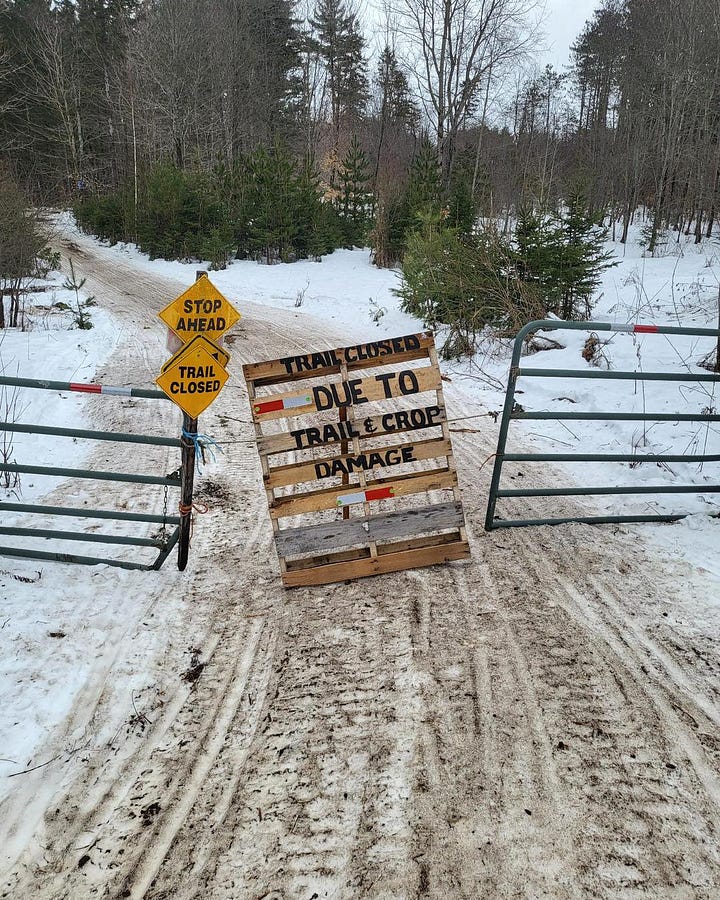
This interaction would stick with me. Each time I notice a mild winter day, I cannot help but think of the families who are supported by the snowmobiling industry and wonder at their future. Many businesses are now operating at the outermost limits of fiscal resilience — and another mild winter may cull a number of inns and taverns entirely. And if the trend of winter rains keeps up, an entire way of life may soon go belly-up for good. While any prophecies about the demise of snowmobiling in the Tug Hill would've provoked incredulous laughter a decade ago, these days, I believe that many would concede that such a possibility looms large — if it is not already unfolding.
And so it is that I've decided to turn away from other projects for a time and pay some of these towns a visit. After I send this article and close my laptop, I'll be loading up my van and heading up to the Tug Hill to talk with proprietors of various establishments in the deep woods along the presently mud-soaked snowmobile trail system. I want to hear firsthand how these places are coping with the snowless winters, what their view of the future is, and whether any of these locales are finding optimism in new ways of doing business. While my Christmas sabbatical has been enlivening and relaxing, it is now over. My curiosity has been piqued, and I must head up into the hills to get a first-hand look at what may very well be an entire culture in decline. With any luck, I'll get some interviews and photographs, and present for you all a portrait of resilience in a little-known corner of my home state. It will be easy enough to find a place to stay — and the taverns will be glad for a customer.
I hope your holiday season has been droll and refreshing; God bless you all. I'll be back soon with my findings on the Tug Hill plateau.




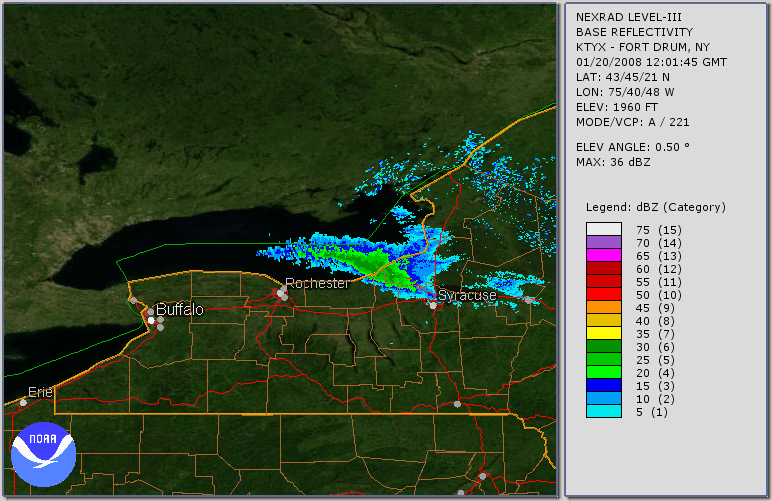
Yes, a snowless Christmas is definitely a dislocating experience, even here in southern Michigan where they do hapen occasionally. But as a kid, living about 100 miles away on nearly the same lattitude, in most years I could count on snow on the ground continuously from late December to early March, and if a thaw did steal it all away it would be back soon enough. Sledding, snowmobiling, skiing (right out the back door), and ice fishing defined part of life. Lived for five years in Michigan's UP, many parts of which Tug Hill sounds like it strongly resembles. Even they're green this holiday. I think there's a collective sense, growing over the years, of having been forcibly relocated.
There are those who are happy about it, envisioning higher property values as Michigan winters moderate. Oy.
Not having snow really impacts hunting. Without snow, you can't effectively track. Especially in the backcountry in places like the Adirondacks, where there are many thousands of acres and deer can't be easily patterned, this is a major disadvantage. With snow, you can have real-time information about where the deer are. Without snow, you're basically hunting with your eyes closed. I remember hunting in the Adirondacks, maybe 5 years ago, and a long time hunting guide told me that it was the first season in his life where he was hunting bare ground. And I think every year since, it's mostly been the same. Hunting on snow is no longer a given, and you end up having to seek out snow covered pieces. Things are changing. I assume hunting guides on tug hill would report similar.